The Nubia Red Magic 3 Review: A 90Hz Gaming Phone With Active Cooling
by Andrei Frumusanu on September 27, 2019 9:00 AM EST- Posted in
- Mobile
- Smartphones
- ZTE
- Nubia
- Snapdragon 855
- Nubia RedMagic 3
Machine Learning Inference Performance
AIMark 3
AIMark makes use of various vendor SDKs to implement the benchmarks. This means that the end-results really aren’t a proper apples-to-apples comparison, however it represents an approach that actually will be used by some vendors in their in-house applications or even some rare third-party app.

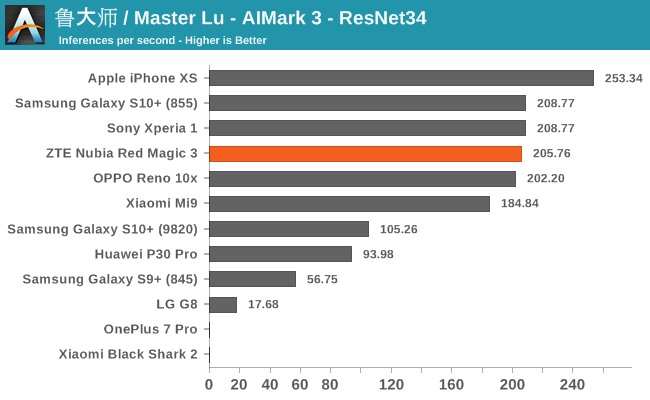
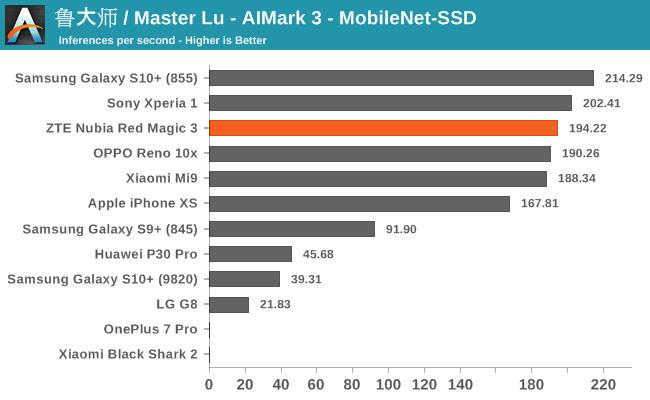
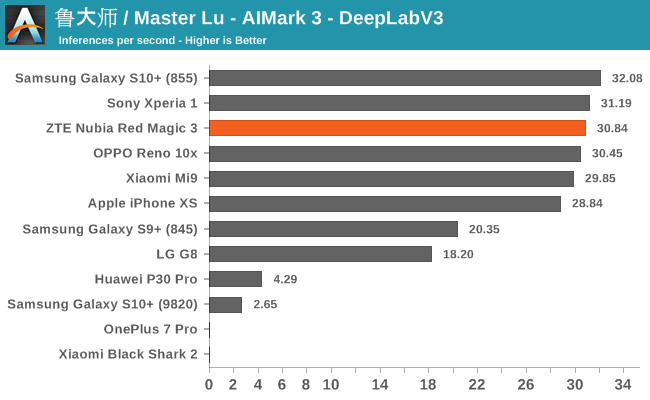
In AIMark, the Red Magic 3 performs alongside the top Snapdragon 855 devices on the market, which is again a good sign of the software optimisations of the phone’s BSP.
AIBenchmark 3
AIBenchmark takes a different approach to benchmarking. Here the test uses the hardware agnostic NNAPI in order to accelerate inferencing, meaning it doesn’t use any proprietary aspects of a given hardware except for the drivers that actually enable the abstraction between software and hardware. This approach is more apples-to-apples, but also means that we can’t do cross-platform comparisons, like testing iPhones.
We’re publishing one-shot inference times. The difference here to sustained performance inference times is that these figures have more timing overhead on the part of the software stack from initialising the test to actually executing the computation.
AIBenchmark 3 - NNAPI CPU
We’re segregating the AIBenchmark scores by execution block, starting off with the regular CPU workloads that simply use TensorFlow libraries and do not attempt to run on specialized hardware blocks.
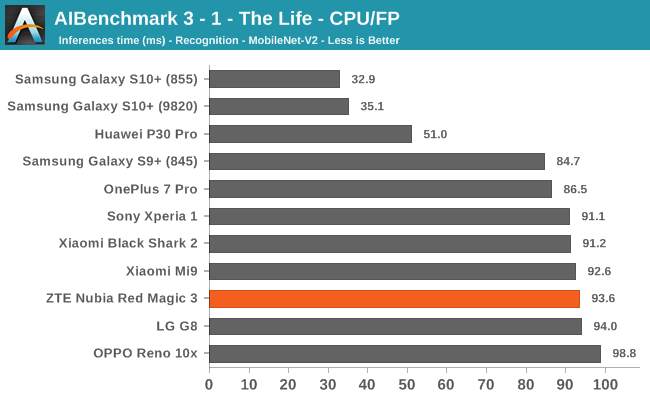
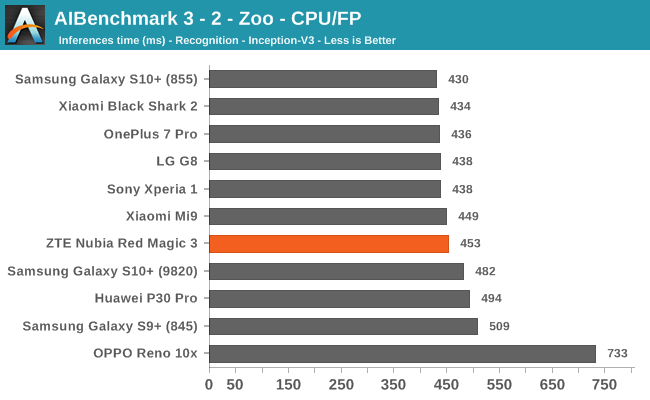
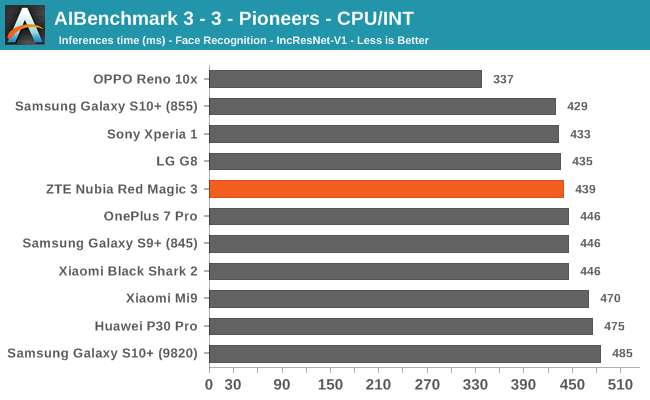
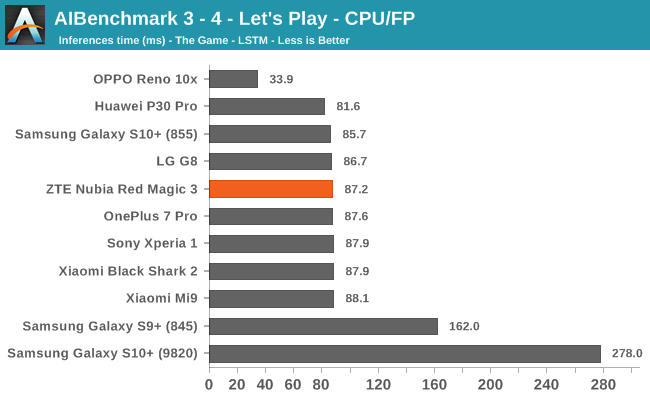
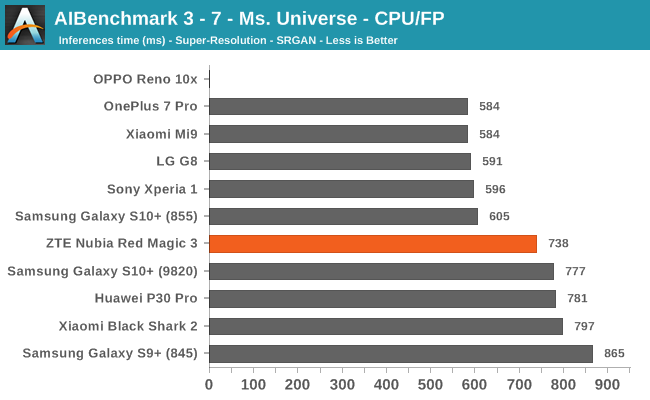
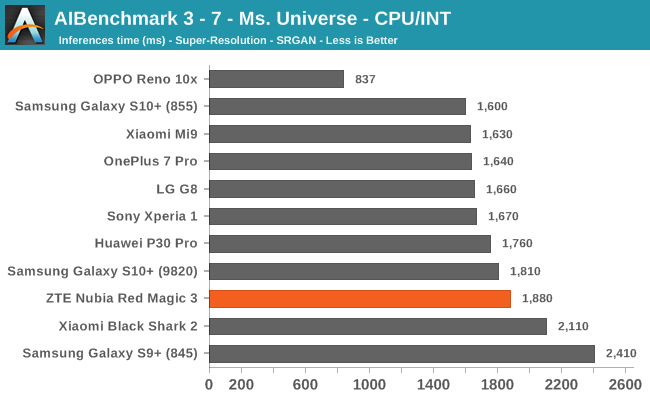
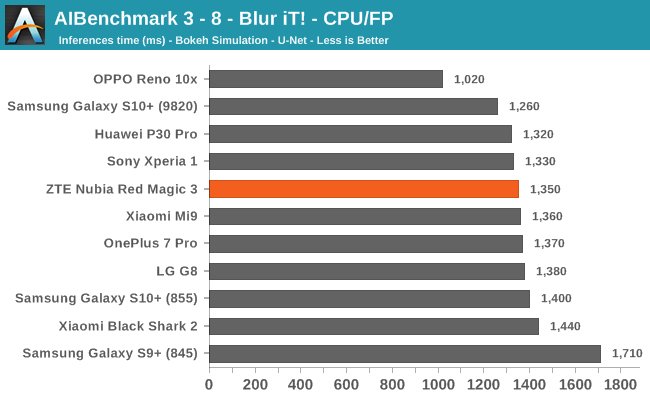
In AI Benchmark’s CPU workloads, the RM3 fares average amongst its S855 counterparts, but nothing too much out of line that it’d be an issue.
AIBenchmark 3 - NNAPI INT8
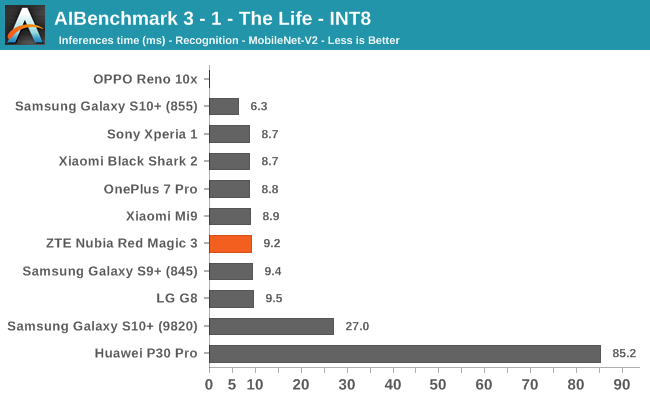
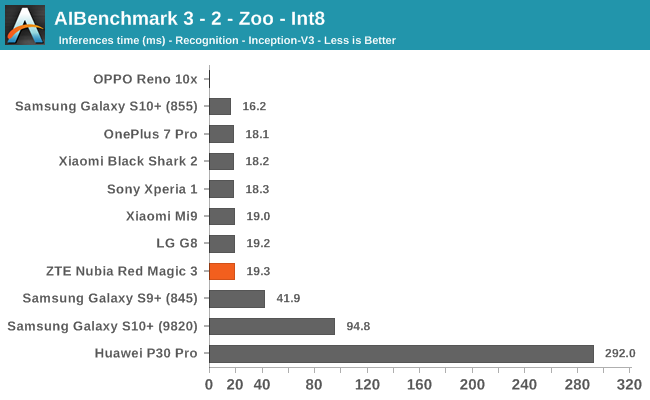
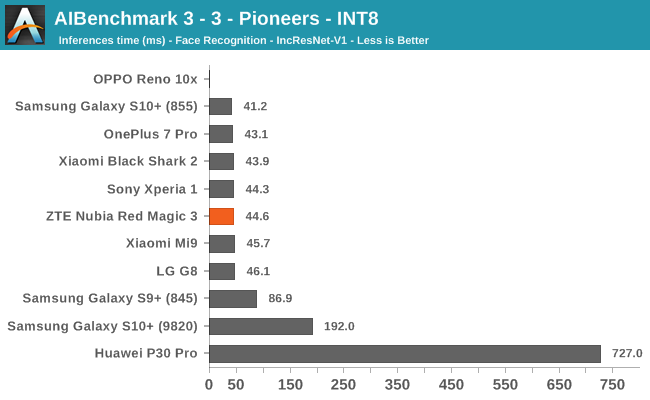
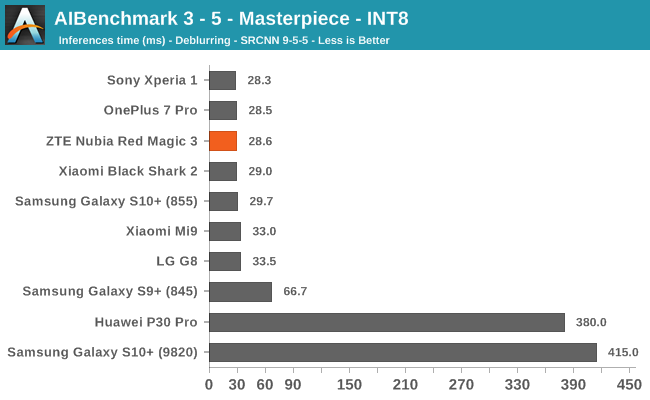
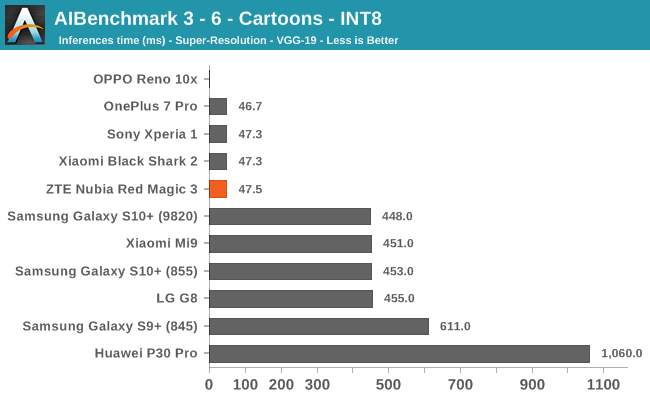
AIBenchmark 3 - NNAPI FP16
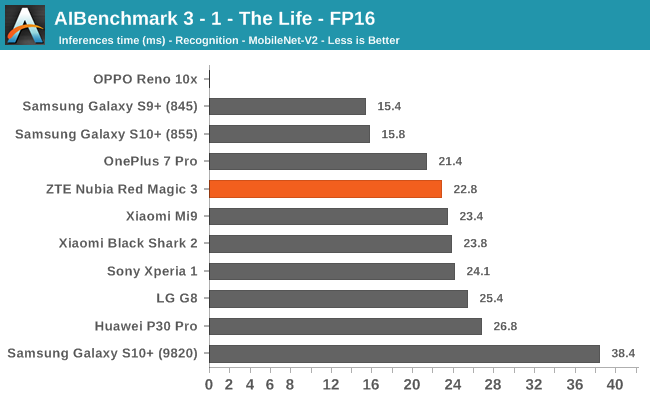
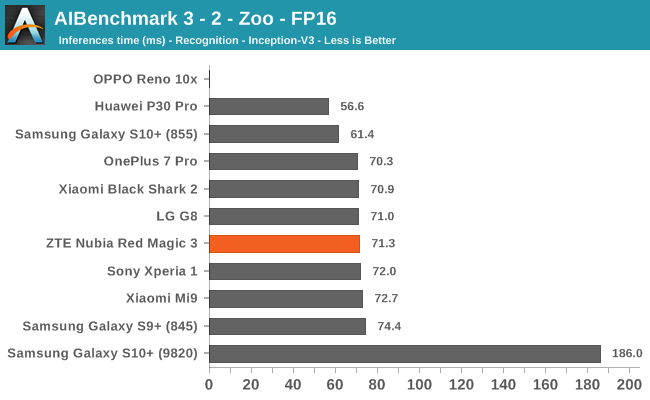
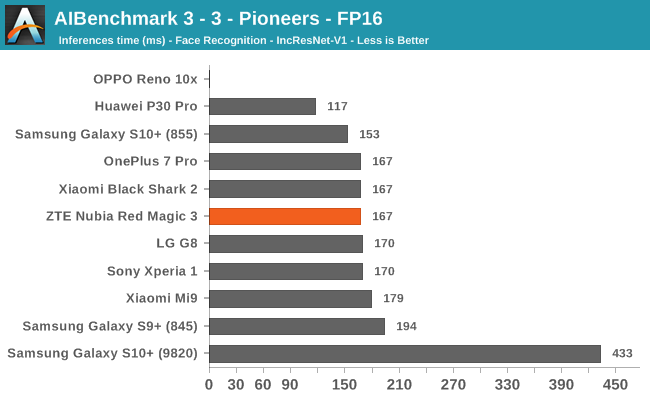
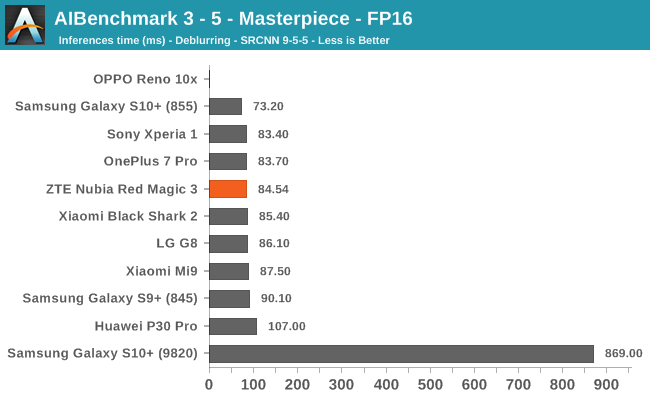
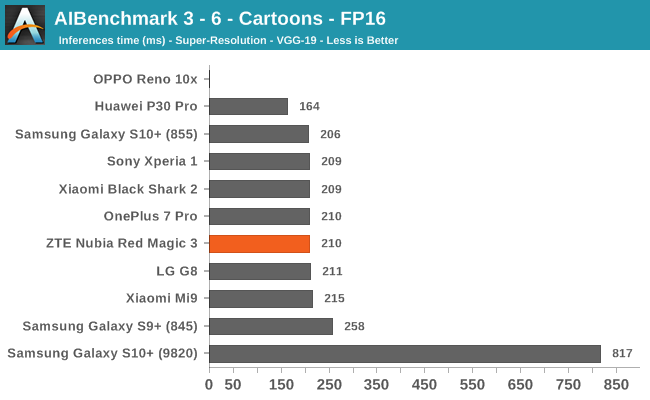
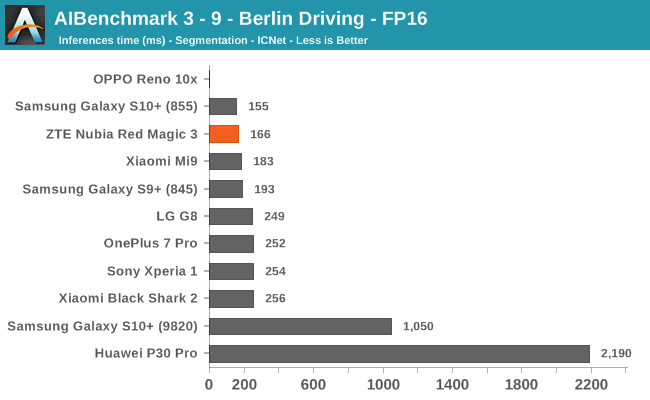
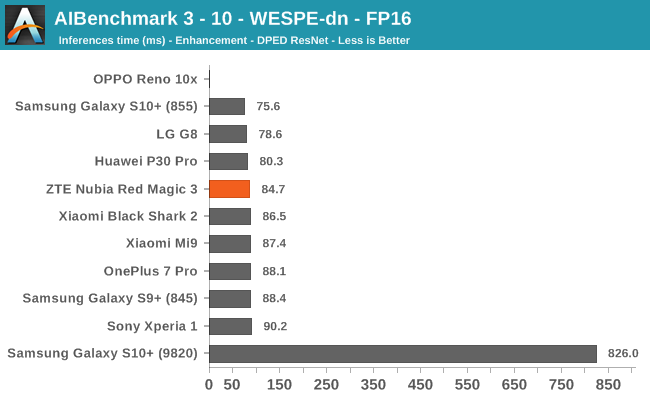
AIBenchmark 3 - NNAPI FP32
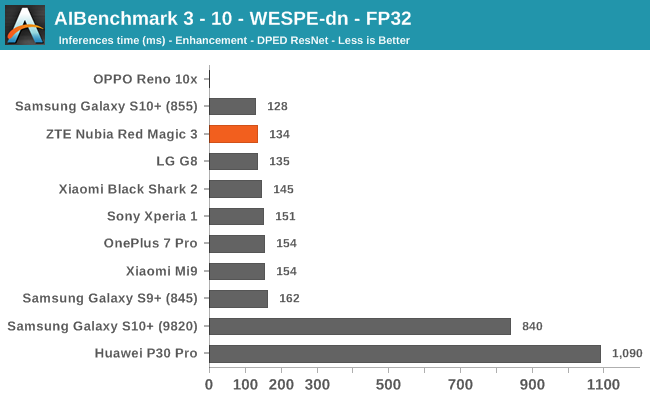
On the INT8, FP16 and FP32 side, the RM3 performs very well and is amongst the top performing phones. This advantage should simply be due to the RM3 having the latest software stack employed.










31 Comments
View All Comments
stephenbrooks - Friday, September 27, 2019 - link
The irony I've noticed is the higher-end the phone (or laptop) is, the faster the battery seems to drain. Presumably because of high-spec components.oRAirwolf - Saturday, September 28, 2019 - link
https://en.wikipedia.org/wiki/Project_AraEj24 - Friday, September 27, 2019 - link
https://en.wikipedia.org/wiki/Project_Aradidn't pan out
webdoctors - Friday, September 27, 2019 - link
The future is streaming, even consoles in the living room are headed towards cloud streaming. With 5G and wifi everywhere on the horizon, its nuts to try to lug a highend SoC into the mobile arena.If an Nvidia Shield TV with 3 GB RAM can do streaming no reason you need such a high end SoC for a streaming gaming phone. They could build a proper streaming gaming phone and have it with much better battery life and lower cost.
peevee - Friday, September 27, 2019 - link
Streaming sucks, streaming over wireless sucks more (hint: large and unpredictable latency).peevee - Friday, September 27, 2019 - link
Plus of course ongoing subscription costs.abufrejoval - Friday, September 27, 2019 - link
Streaming doesn't have to be from the cloud: Your gaming desktop in the next room might do just as well.I use that for kid's LAN parties, where I put notebooks on the dinnertable to avoid lugging the gaming towers to the "hot spot".
And yes, cables, even 100Mbit/s, beat WiFi any time of the day even for local streaming (e.g. Steam remote play).
Of course, a certain degree of masochism is required to game on a phone when you can have a proper screen (or simply younger eyes).
PeachNCream - Friday, September 27, 2019 - link
I used to do quite a bit of streaming via Steam from a desktop PC that I had running headless and crammed into a corner near my cheap ISP router. It was wired at 100mbit. The other end was an Atom n450 netbook running Linux on WiFi and its NIC topped out at 54mbit. It was pretty good for stuff like Fallout 3 and Skyrim. Latency was decent even when there was other usage of the local network for things like Youtube streaming or web surfing (the gaming desktop was the only thing not on wireless so phones and other laptops were being used by family members). I wouldn't want to play a twitchy shooter type thing over it, but for pretty much anything else it worked really well. I think in the intervening three or so years, things have probably gotten better but I can't test that since I no longer have a gaming PC, just some casual stuff that runs natively under Linux on my laptops. I haven't even had Steam installed in the last couple of years since entertainment is slowly shifting over to my phone these days. There just isn't much need for PC gaming or streaming between PCs.FunBunny2 - Sunday, September 29, 2019 - link
"With 5G and wifi everywhere on the horizon"Real 5G???? outside of sports stadiums, not going to happen. hell, it can't even get into a stick built house. you'll need a rooftop antenna to capture the signal. just watch.
"Verizon uses a window or roof-mounted 28GHz antenna to grab the 5G signal, which is distributed via WiFi from a home router indoors."
here: https://www.lightreading.com/mobile/5g/verizons-fi...
IOW, Real 5G ends up being little different from phone pole fiber.
peevee - Friday, September 27, 2019 - link
You have missed the most important spec of a mobile phone - wireless protocols/frequencies supported.It is not an iPod after all.